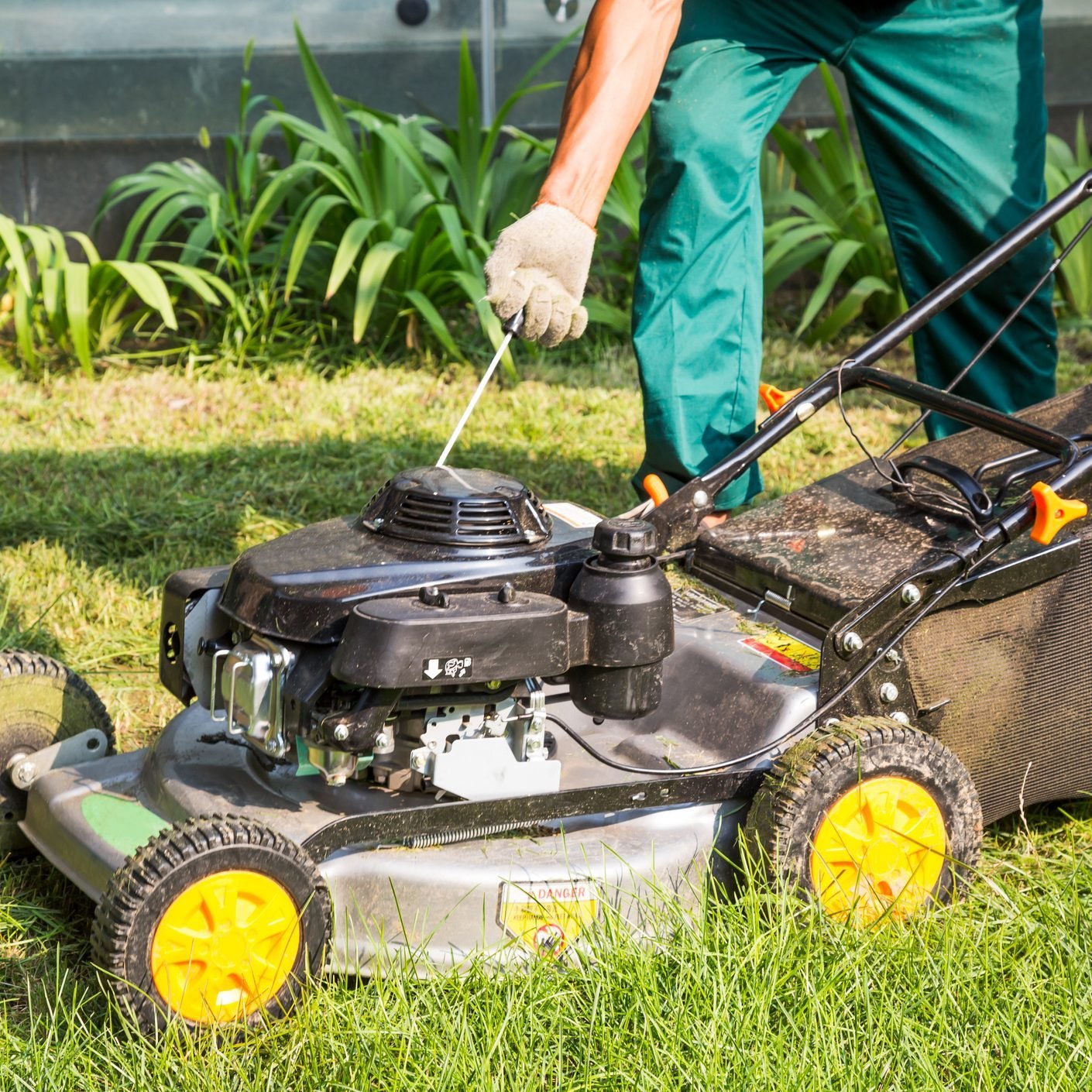Here’s What To Do If Your Lawn Mower Won’t Start
Updated: Apr. 17, 2024
Whether you just dusted it off for the season or it stopped mid-mow, here's how to troubleshoot when your lawn mower won't start.
0.5 to 2 hours
Beginner
Varies
Introduction
Lawn maintenance can be a bit of drudgery. Add in a lawn mower that won't start, and it's a downright drag. But if you're in that situation, temper your frustration for a second because it might be something as simple as bad gas or a clogged carburetor or filter.
If it is a straightforward problem, here are the steps to diagnose it. And in the future, follow these lawn mower winterizing and maintenance steps to prolong the life of your mower and prevent breakdowns.
When Should You Call a Pro?
Anytime you don't feel comfortable with your safety, or after you've gone through these steps and it's still not working, it might be time to call a pro. "It's important to understand that lawn mowers are heavy pieces of machinery with sharp blades, and you should never push yourself beyond your skill set and ability or you could end up getting hurt," says Angie Hicks, co-founder of Angi.
Tools Required
- Adjustable wrench
- Needle-nose pliers
- Rags
- Rubber gloves
- Screwdrivers (various)
- Socket/ratchet set
Materials Required
- Carburetor cleaner
- Carburetor or carburetor inlet needle and seat
- Gasoline and oil
Project step-by-step (9)
Check the gas and oil
First things first: check the gas tank to make sure there’s gas in it. It sounds obvious, but that mistake has actually happened to most of us (myself included).
Next, visually inspect the quality of the gas and oil for dirt and moisture contamination, especially if you didn’t add fuel stabilizer to it before storing it for the season. If the gas is more than a month old, and especially if the oil has turned milky white, drain it responsibly, then add new gas and/or oil. It may take several pulls to suck the new gas into the lawn mower carburetor, and you may also have to clean and dry the spark plug a few times (see step three below).
Check the fuel filter
The fuel filter prevents dirt and debris from getting into the combustion chamber of the engine, and, as such, it can get clogged. Not all lawn mowers have one, but for the ones that do, the fuel filter is usually located in the fuel line or fuel tank (check your owner’s manual for its placement and model number).
You might have noticed telltale signs of a clogged fuel filter when you last used the mower, such as sputtering and rough idling. To check if that’s the problem, first, tap the side of the carburetor to help the flow of gas. If that doesn’t work, try replacing the filter.
If the filter is in the fuel tank, you must drain the gas to proceed. If it’s in the fuel line, then clamp that off before removing the filter. Once you have the filter off, check to see if it’s dirty and clogged by holding it up to the light.
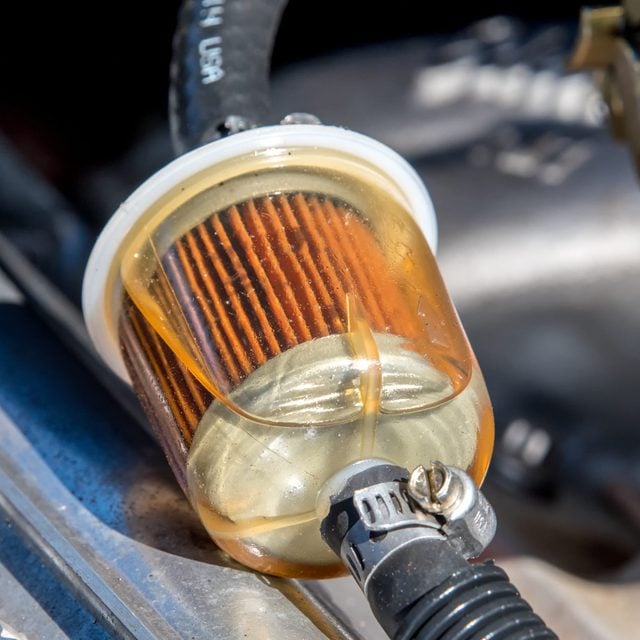
Check the spark plug
“A very common reason why a lawn mower won’t start is faulty spark plugs,” says Hicks. “You can first try to clean and tighten them, but if that doesn’t work, they may need to be replaced.”
Also, check that the lawn mower spark plug cable is connected to the plug itself. It’s quite possible it got pulled off while in storage. If that’s not the issue, remove the spark plug to see if it’s wet. If it is, there’s no way the engine will start, so clean it with carburetor cleaner and let it dry.
- Pro-tip: Cleaning a spark plug with compressed air isn’t enough; you need a solvent to remove oil residue. If it’s really grimy and dirty, getting a new spark plug might be best.
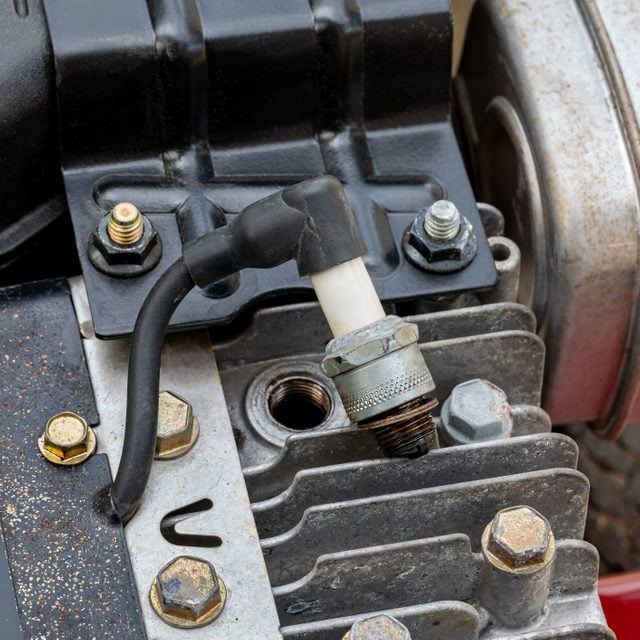
Test the battery
If your lawn mower has a battery, it’s probably good for three to five years. “So if you’re hitting that time, it may need to be replaced,” says Hicks. “You can also check by looking at the battery for cracks and corrosion or testing it with a multimeter.”
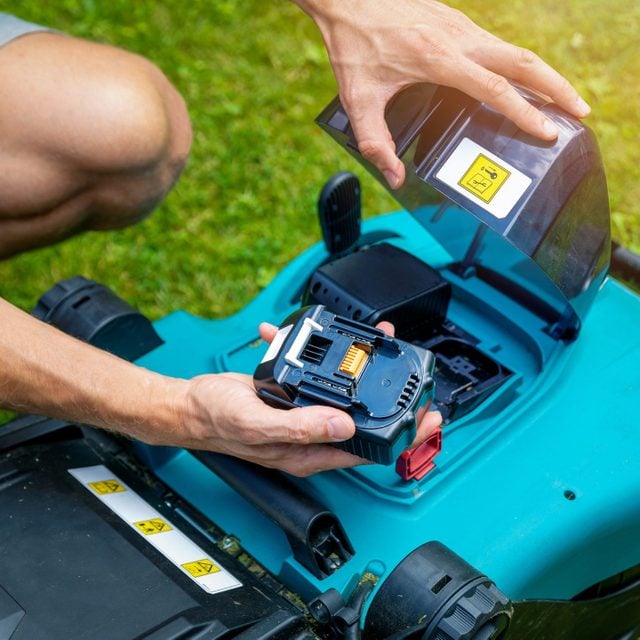
Check for debris in the mower deck
Grass clippings can get clogged in the mower deck and prevent the blade from turning. This is an especially common problem when cutting wet or long grass. If the cord is hard to pull, that’s a good sign there’s debris clogging up your mower’s deck. With the mower off, flip it on its side or upside down and scrape out the gummed up grass clippings. Make sure to wear tough gloves and other appropriate safety gear.
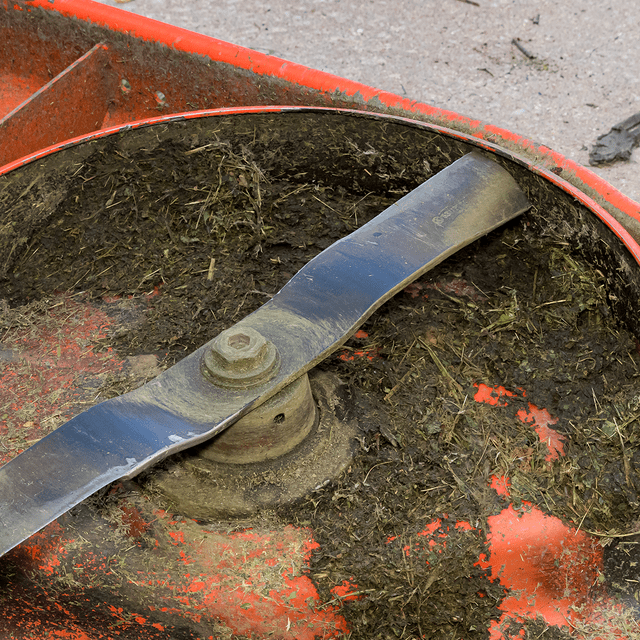
Check the carburetor
The carburetor regulates the mixture of gas and air going into the engine, which is then burned to crate power. A clogged or dirty carburetor is often the culprit when a lawn mower won’t start. It can also cause your mower to run rough or spew black smoke.
To get to the carburetor, you’ll have to remove the air filter. Once it’s out, clean it and check for corrosion. If you see chalky/powdery white corrosion, it’s probably best to replace it.
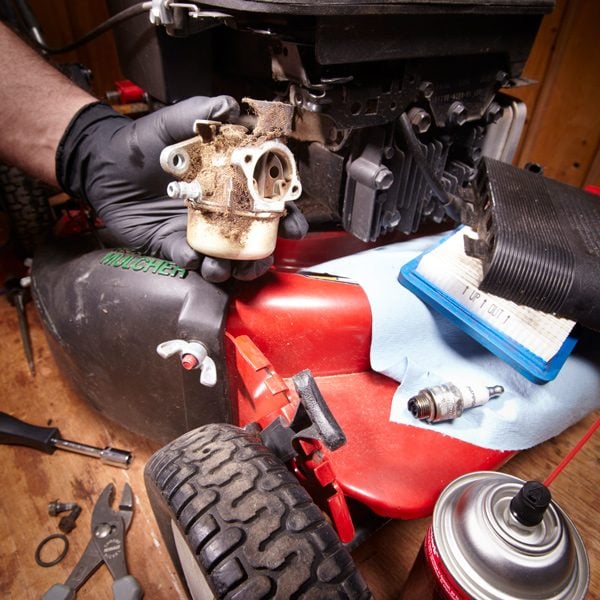
Check the air filter
Before air goes into the carburetor to combust with the gas, it goes through an air filter. If that gets clogged, it’ll throw the ratio of air-to-gas out of whack, causing your mower to smoke or prevent it from starting all together. Check the air filter to see if it’s dirty, and if so, clean it or replace it.
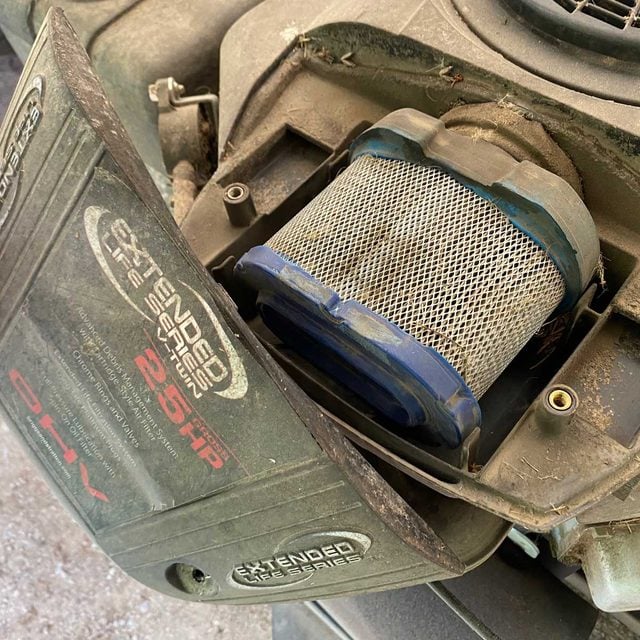
Read the Owner’s Manual
When all else fails (or even before that!) check the owner’s manual to see if there are any action items specific to your mower.
FAQs
How do you move a riding lawn mower that won’t start?
Most riding lawn mowers are equipped with a transmission bypass valve, says Justin Urbanek, product manager for John Deere. “There are typically rods or levers near the rear wheels of a zero-turn mower or the rear of a riding tractor that can be engaged and locked into place to allow the machine to be pushed or towed,” he says. “Electric mowers have a similar function, but typically it will be an electronic switch instead of mechanical lever.”
How long should a lawn mower last?
Typically ten to 15 years, with regular maintenance. “One item to consider is the warranty duration offered by the manufacturer,” says Urbanek. “A mower with more years and hours of warranty offered typically indicates a longer intended life of the mower.”
How do I know when it’s time to replace my lawn mower?
If your lawn mower is more than ten years old and needs major repairs like a new transmission or engine, it is likely time to replace it, says Hicks. To help you decide, weigh the cost of a new mower, the value of your existing mower and the cost of repairs and maintenance, says Urbanek. “Every owner will have different thresholds on these three items,” he says.
Do electric lawn mowers work as well as gas-powered lawn mowers?
Yes, in most instances they do, plus they require less maintenance. “For example, the John Deere Z370R Electric mower was engineered and built to have no compromises when compared to our equivalent Z320R gasoline mower,” says Urbanek. “Ensure the battery capacity is sufficient to mow your property size, and that the mower specifications, such as water and weather resistance, will meet your application.”
About The Experts
Justin Urbanek is the Product Manager for John Deere residential zero turn mowers. He has 14 years of experience with John Deere in product marking, engineering and customer support.
Angie Hicks is cofounder of Angi (formerly Angie’s List), where she also works as the Chief Customer Officer. Through her roles there, she’s helped guide people through home maintenance decisions for more than 25 years.

